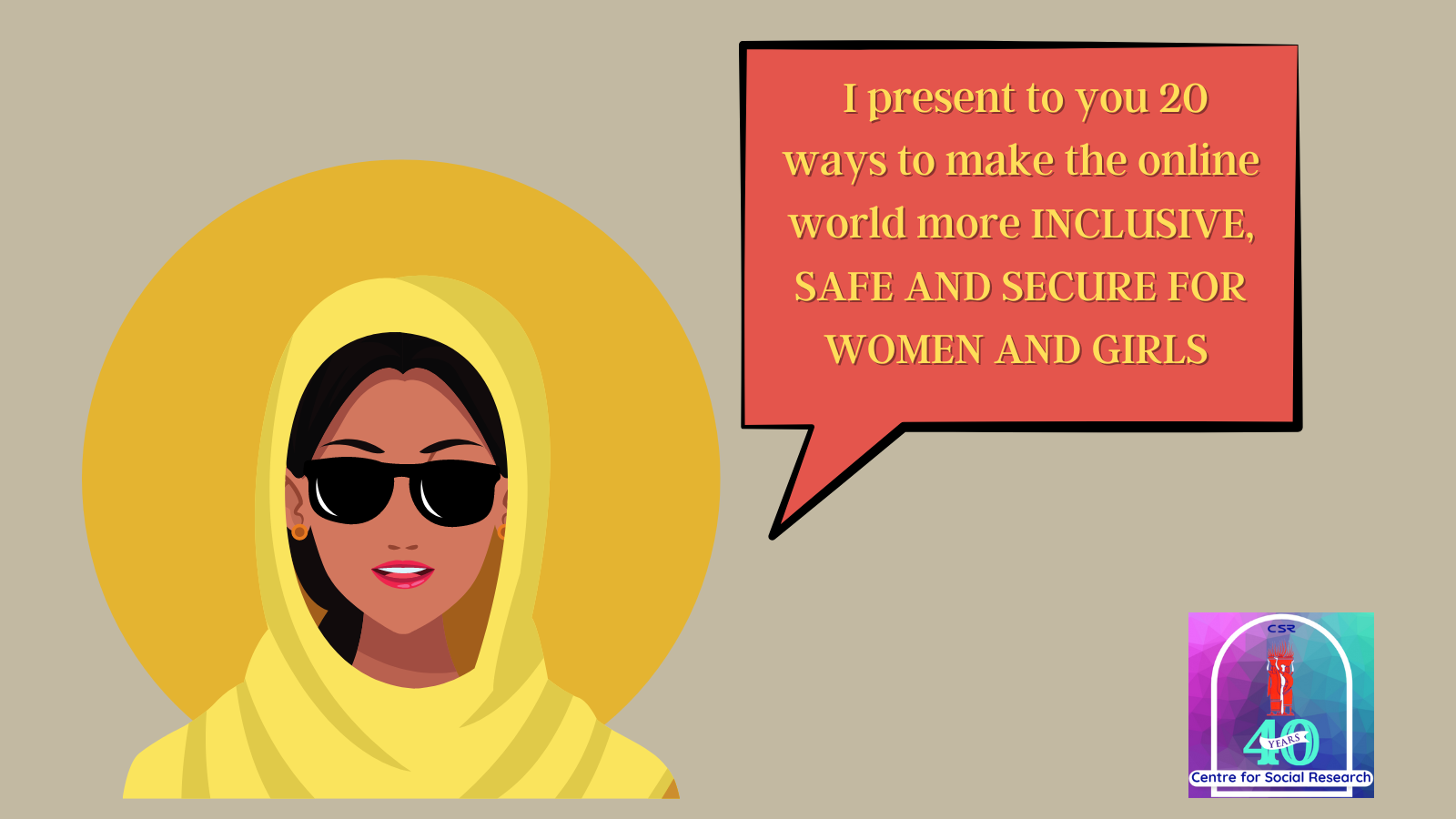We asked ChatGPT for 20 ways to make the online world more INCLUSIVE, SAFE AND SECURE FOR WOMEN AND GIRLS, and this is what it had to say 👍
Creating an inclusive, safe, and secure online environment for women and girls is crucial to promoting gender equality and ensuring everyone’s well-being in the digital age. Here are 20 ways to achieve this goal:
- Raise Awareness:
1.1. Develop campaigns highlighting online harassment issues.
1.2. Share real stories of women and girls facing online abuse.
1.3. Encourage media outlets to report on the impact of online harassment.
- Educate and Empower:
2.1. Offer digital literacy and online safety programs.
2.2. Teach girls and women how to identify and report harassment.
2.3. Promote positive role models in tech and online communities.
- Strengthen Legal Protections:
3.1. Advocate for stricter laws against online harassment.
3.2. Ensure harassment laws are enforced effectively.
3.3. Promote international cooperation to address cross-border harassment.
- Support Victims:
4.1. Establish helplines and support groups for victims.
4.2. Provide counseling services for those affected by online abuse.
4.3. Create safe spaces for sharing experiences and seeking help.
- Encourage Reporting:
5.1. Simplify and streamline the reporting process for online abuse.
5.2. Ensure that reporting mechanisms are user-friendly and anonymous.
5.3. Guarantee protection for whistleblowers.
- Develop Technology Solutions:
6.1. Invest in AI and machine learning to detect and prevent harassment.
6.2. Create apps and tools for tracking and reporting online abuse.
6.3. Develop software to filter or block harmful content.
- Promote Online Civility:
7.1. Encourage respectful online behavior through social media campaigns.
7.2. Foster empathy and dialogue in online communities.
7.3. Moderate and enforce community guidelines.
- Engage Men and Boys:
8.1. Involve men and boys in discussions about online harassment.
8.2. Promote male allyship in combating cyberbullying.
8.3. Encourage respectful behavior among young boys.
- Support Online Activism:
9.1. Protect activists working for women’s rights online.
9.2. Offer resources and training for digital advocacy.
9.3. Highlight the positive impact of online activism.
- Media Responsibility:
10.1. Hold media outlets accountable for harmful portrayals of women.
10.2. Promote ethical journalism and reporting.
10.3. Encourage media literacy programs.
- Online Privacy:
11.1. Educate women and girls about online privacy settings.
11.2. Promote the use of strong passwords and two-factor authentication.
11.3. Raise awareness about the risks of sharing personal information.
- Foster Collaboration:
12.1. Collaborate with tech companies to develop safety features.
12.2. Partner with NGOs and women’s organizations to address harassment.
12.3. Create international alliances to combat online abuse.
- Research and Data Collection:
13.1. Support research on the prevalence and impact of online harassment.
13.2. Use data to inform policy and awareness campaigns.
13.3. Conduct studies on the effectiveness of interventions.
- Promote Gender Equality Online:
14.1. Advocate for equal representation of women in online spaces.
14.2. Encourage diversity in tech companies and online platforms.
14.3. Celebrate achievements of women in technology.
- Safe Reporting Channels:
15.1. Ensure that online platforms have clear reporting channels.
15.2. Provide quick responses to reports of harassment.
15.3. Implement consequences for harassers.
- Training for Law Enforcement:
16.1. Train law enforcement agencies to handle online harassment cases.
16.2. Create specialized units for cybercrime investigations.
16.3. Ensure sensitivity and competence in handling cases involving women and girls.
- Digital Support Networks:
17.1. Establish online support networks and forums for victims.
17.2. Encourage peer-to-peer assistance and advice sharing.
17.3. Promote mental health resources for those affected.
- Encourage Positive Content:
18.1. Support and fund content creators who promote positive narratives.
18.2. Encourage women and girls to share their stories and experiences online.
18.3. Highlight inspirational online content.
- School and Parental Involvement:
19.1. Include digital literacy and online safety in school curricula.
19.2. Educate parents on how to protect their children online.
19.3. Create partnerships between schools and tech companies for safe online learning.
- Government Initiatives:
20.1. Governments should allocate resources to address online harassment.
20.2. Promote policies that protect women’s and girls’ digital rights.
20.3. Collaborate with international bodies to combat online abuse.
By implementing these strategies, we can work towards a more inclusive, safe, and secure online world for women and girls, where they can fully participate in the digital space without fear of harassment or discrimination.





